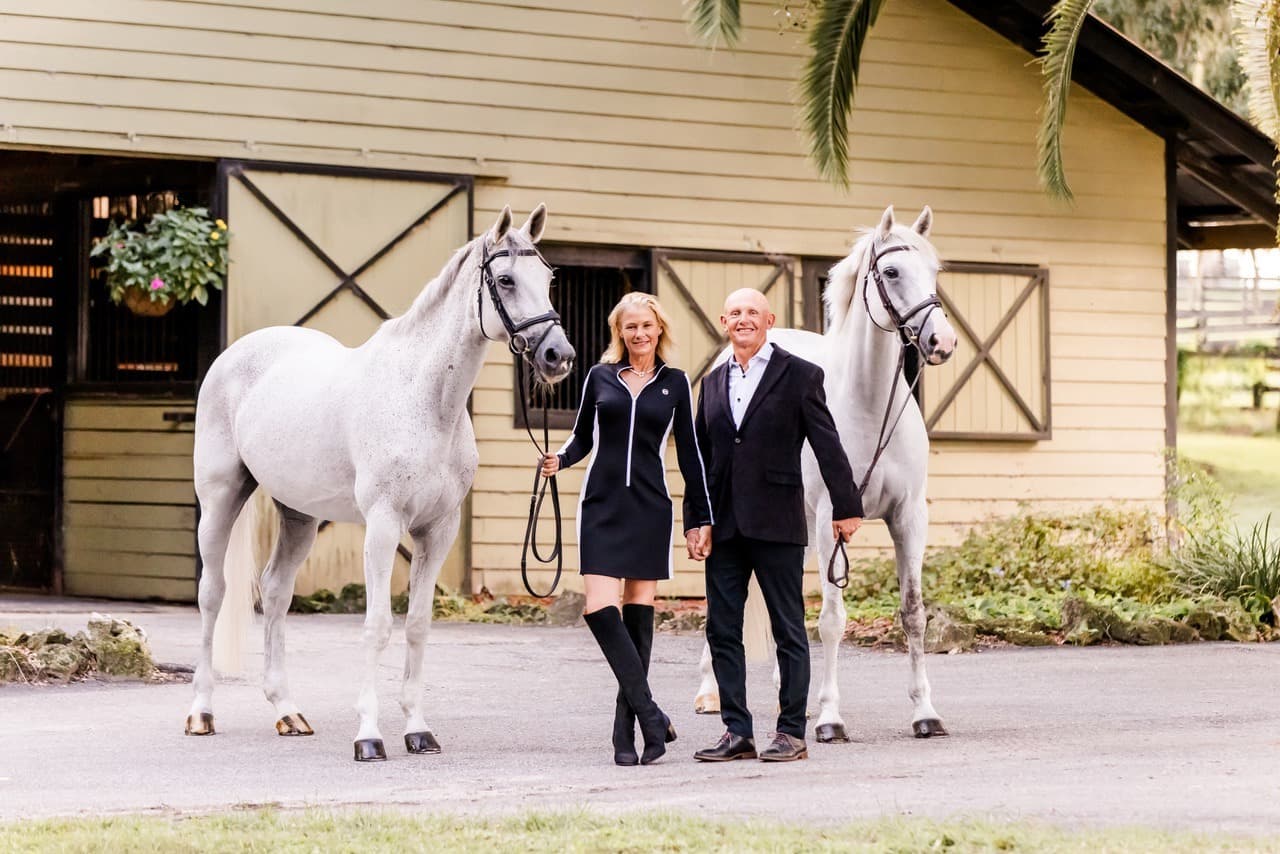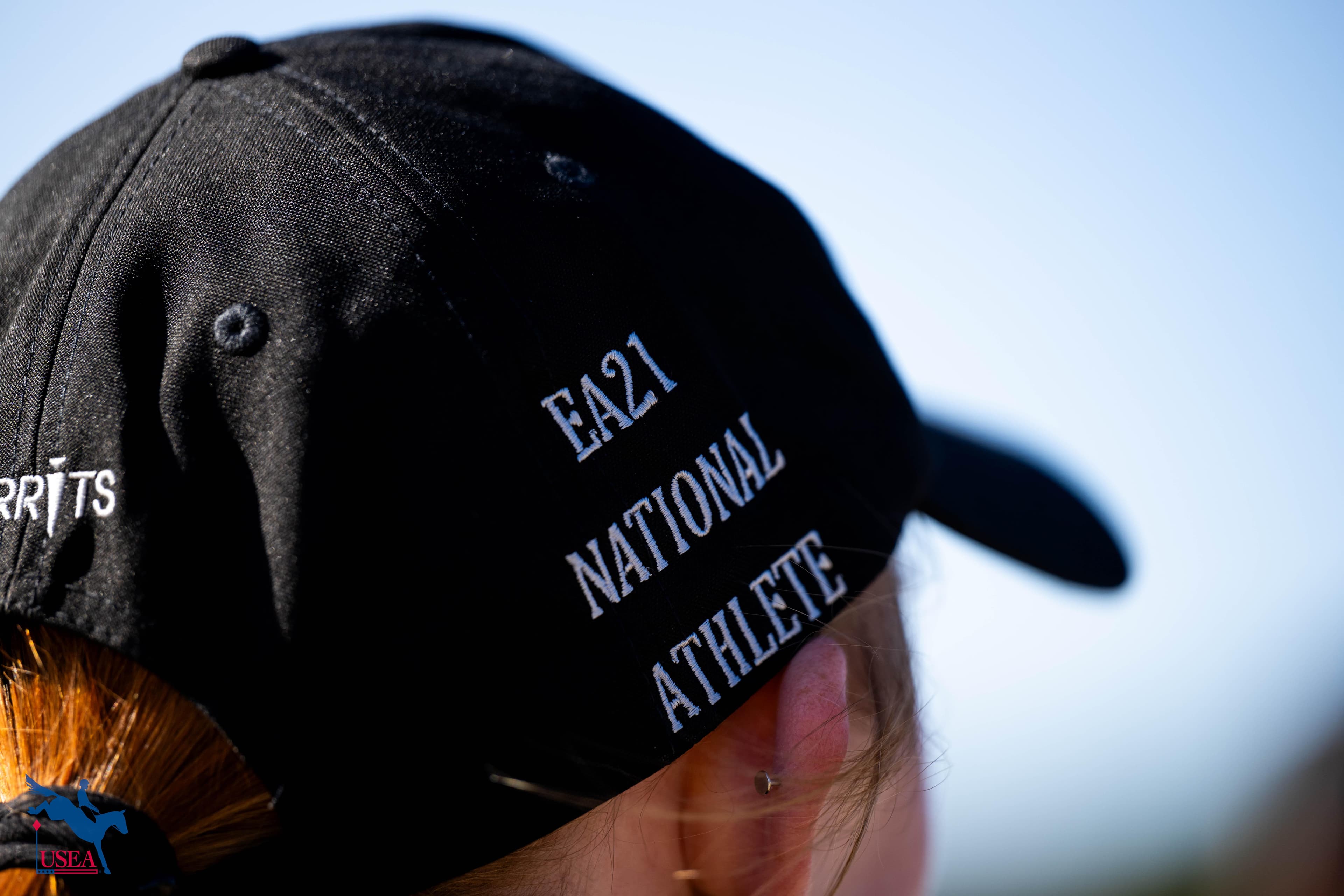The Building Blocks of Training on Day 1 of the USEA EA21 East I Clinic
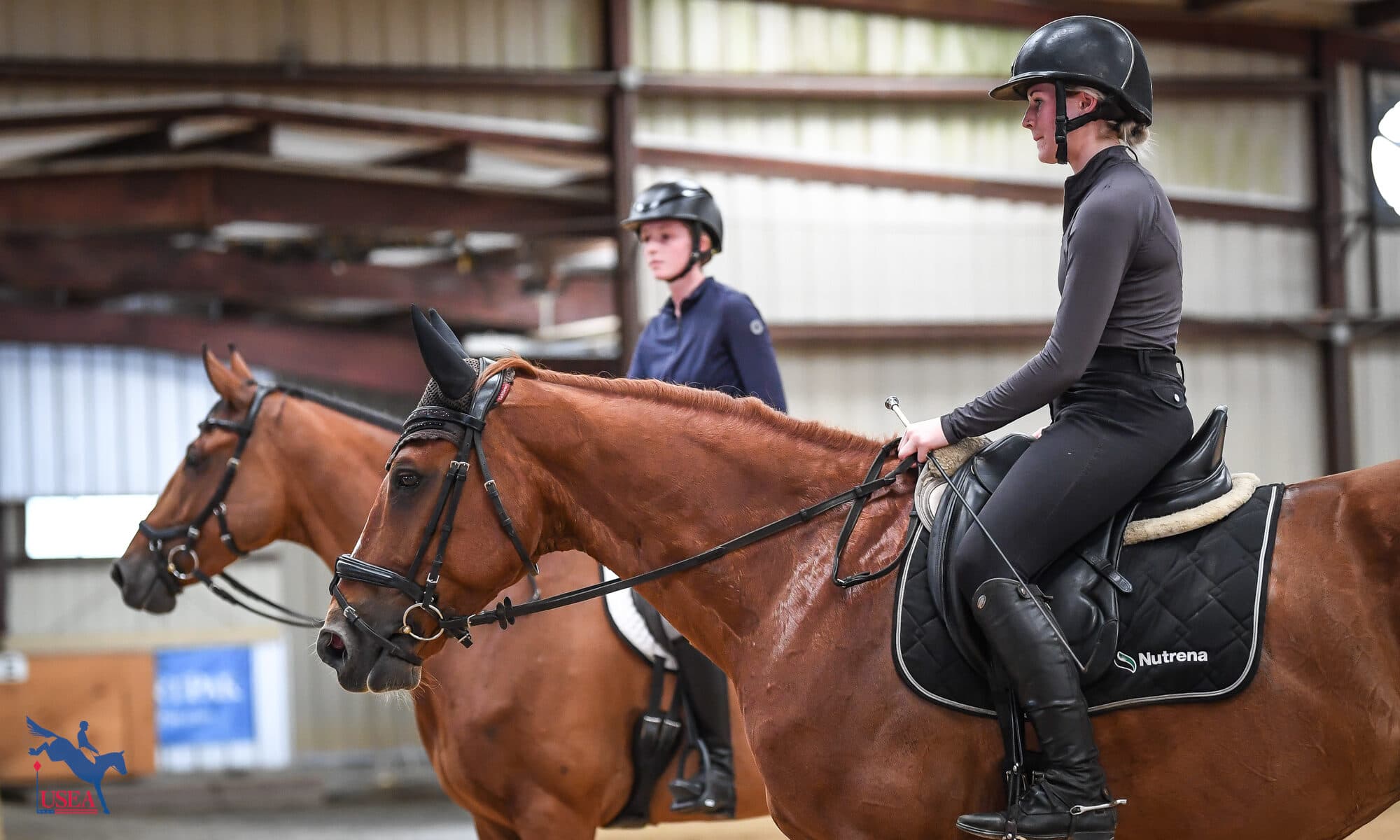
Leesburg, Va.—June 25—Flatwork is the foundation for jumping, as most eventers know. And today, on the first day of the USEA Emerging Athlete U21 (EA21) East Coast I Regional Clinic at Morven Park, coach Shannon Lilley got down to the nitty-gritty of the German Training Scale to help 12 riders with their own horses and on their briefly borrowed mounts at the end of each session when they swapped horses with their lesson partner.
Lilley gave a lecture on Monday outlining the training scale, which starts with rhythm at the bottom of the pyramid, followed by relaxation, connection, impulsion, straightness, and collection. Today, she wanted to see riders put that scale into action through various exercises.
“I made it clear to them yesterday that I wanted them to be an active part of teaching,” she said. “[If they’re watching,] I’m asking them to sit with me and chime in and ask them what they think based on the scale, starting with rhythm and relaxation and suppleness—what they see. So many of them see really good things and see the right things. If they can see it from the ground, they can usually notice it from the saddle and then do something about it.”
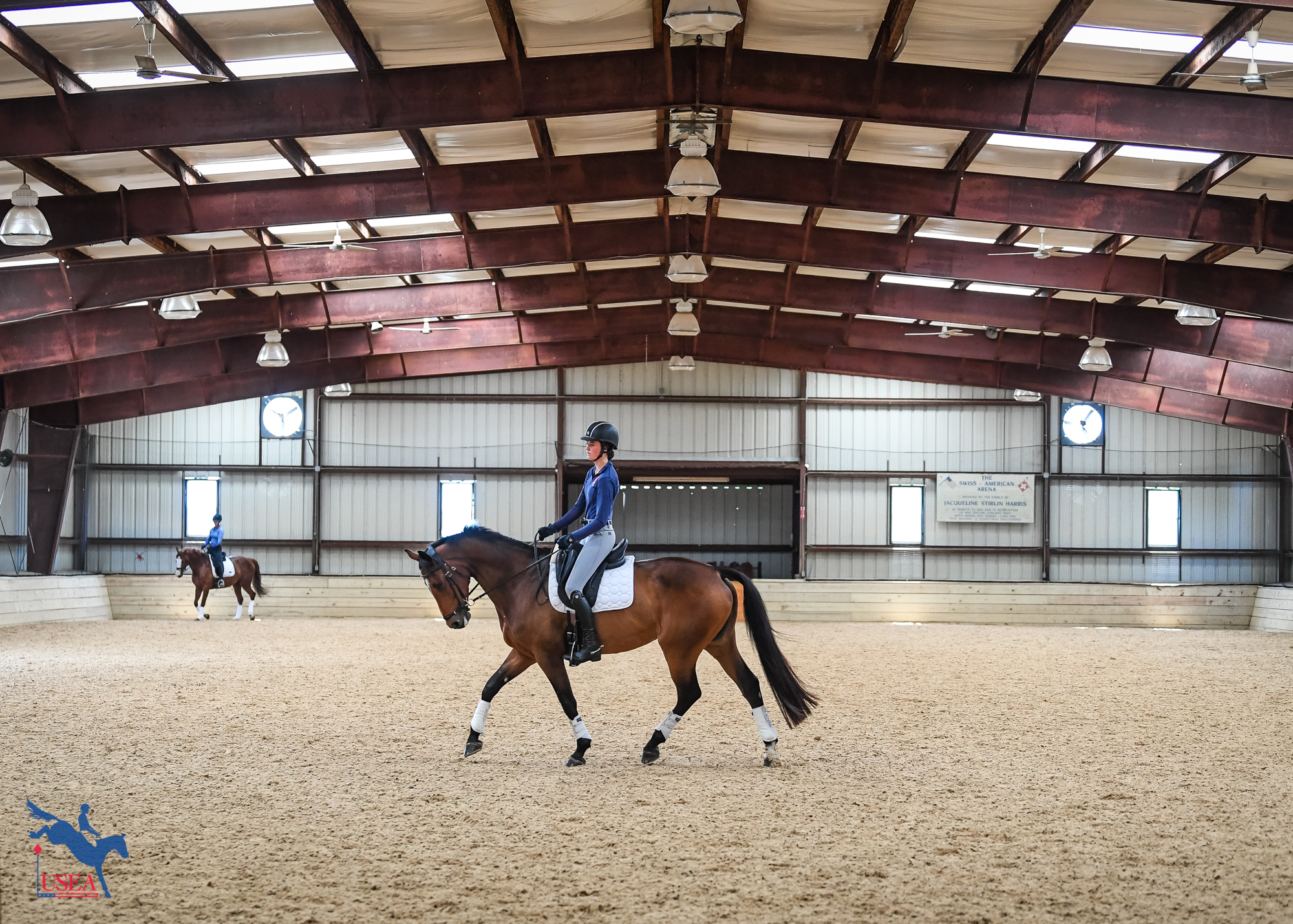
Lilley noted that while yes, she wants riders to be able to improve the canter for the jumping phases and the rideability within them, a strong and supple canter can also help produce a better trot.
“We discussed the scale yesterday and why it’s a pyramid and how it builds upon itself and what exercises to use to achieve each level,” she said. “A lot of today was, you hear, ‘I would do this to help that,’ and they actually have a pretty good knowledge base. They all train with pretty good people. Then it’s just about reminding them that your job is to make it this much better today, and then the next level tomorrow and where to take it. I’m trying to give them exercises to build—just like the scale builds on itself, your training will build on itself.
“The purpose of these camps is to educate them, not getting the best work out of them on the day,” she continued. “They all got better, but it’s about making a broader knowledge base so then they’re better horsewomen.”
Lilley started with lateral work in walk and trot for each of the six groups of two. Leg yielding to and from the rail, 10-meter circles in the corners, and lengthened and shortened trot steps on the diagonal and longside helped horses with suppleness.
“It’s OK if it falls apart, especially in practice,” Lilley repeated often. If a younger horse broke to trot during a haunches-in, that was fine. If an experienced horse did a lovely flying lead change down the longside in lengthened counter-canter, that was fine too. “The walk is the best place to show them they can do it,” she added, making sure the groups with younger horses started their lateral work in that gait.
One exercise Lilley used often was counter-canter.
“I’m a big counter-canter person. Part of it is that it acts like a barometer—you know where the holes are if you can’t do it,” she said. “The horses don’t care about what side the wall is on. It’s usually us that changes something, so then they’re out of balance. If you can do it, then you can improve so many other things. It’s making sure they’re level in their hips and straight and having the right balance. It’s something I use quite a lot to be able to develop horses and riders. A lot of times it’s misconstrued where the positioning needs to be, so it’s a good opportunity to explain how they canter and where the positioning needs to be to create the balance so it’s easy for the horses to be able to do it. It’s a good training opportunity and tool.”
In the first group, riders Emeline Gilbert and Lizzie Hoff had no problems with the canter work, but, said Lilley, “you need to make your seat a little more drastic so they can understand. Hips more open when you want to go. It just takes practice. Be a little more obvious. You’re both very quiet riders and very pretty, but we want to be more influential.”
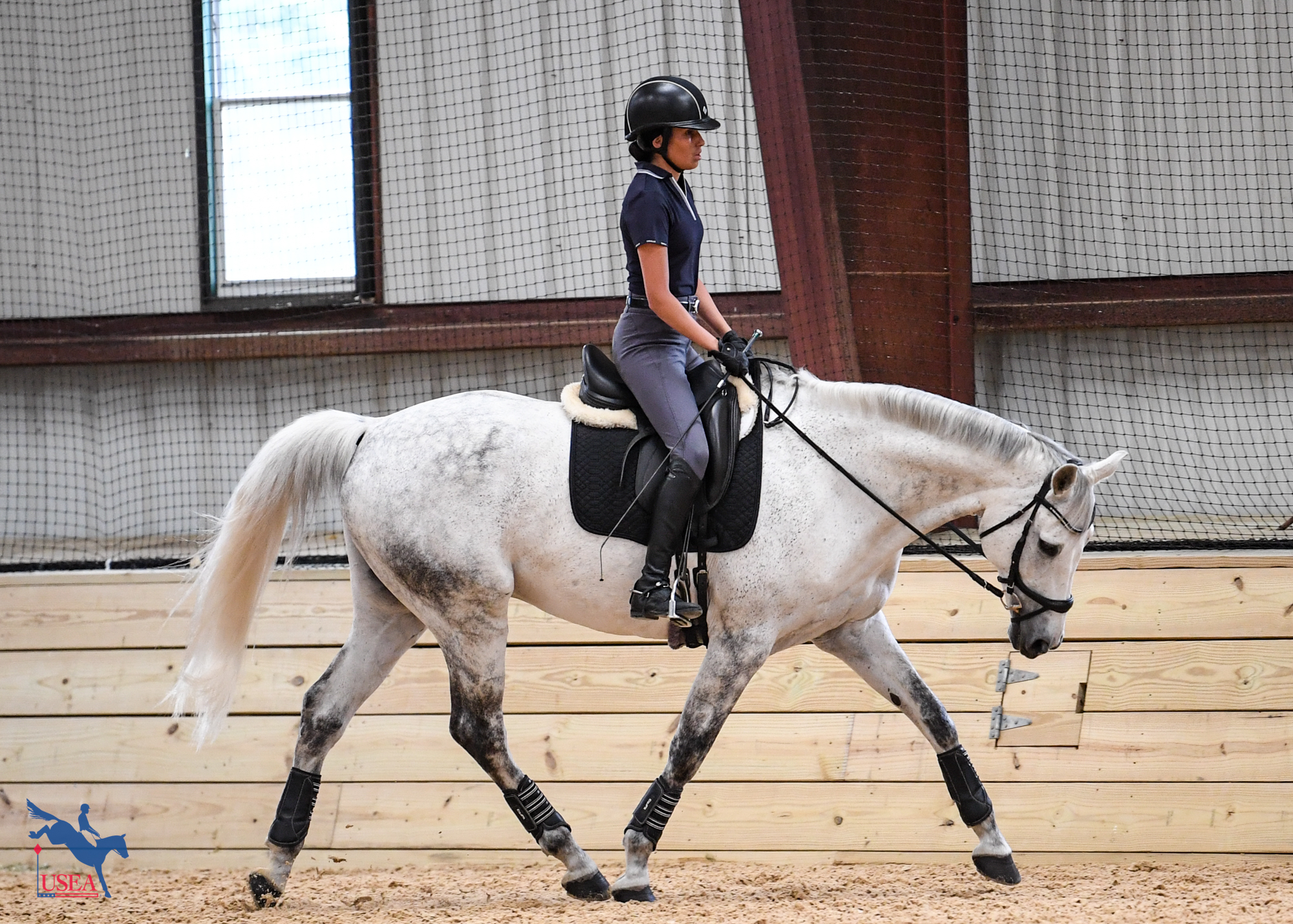
New this year was a horse swap during the dressage lessons. Each pair of riders changed horses for the last 20 minutes to get the opportunity to apply the training scale and watch their horse improve under another rider.
Lilley said the EA21 coaches got together after the National Camp in January and thought it would be a different kind of learning opportunity.
“Most of my group all ride other horses—the work for someone or they have multiple horses,” she said. “They’re doing a great job improving the horses from the time they get on to when they get off. It was something we thought would be a good challenge for the program. If you go through Pony Club, you have to do that. I think it’s really important to be able to do that on the flat.
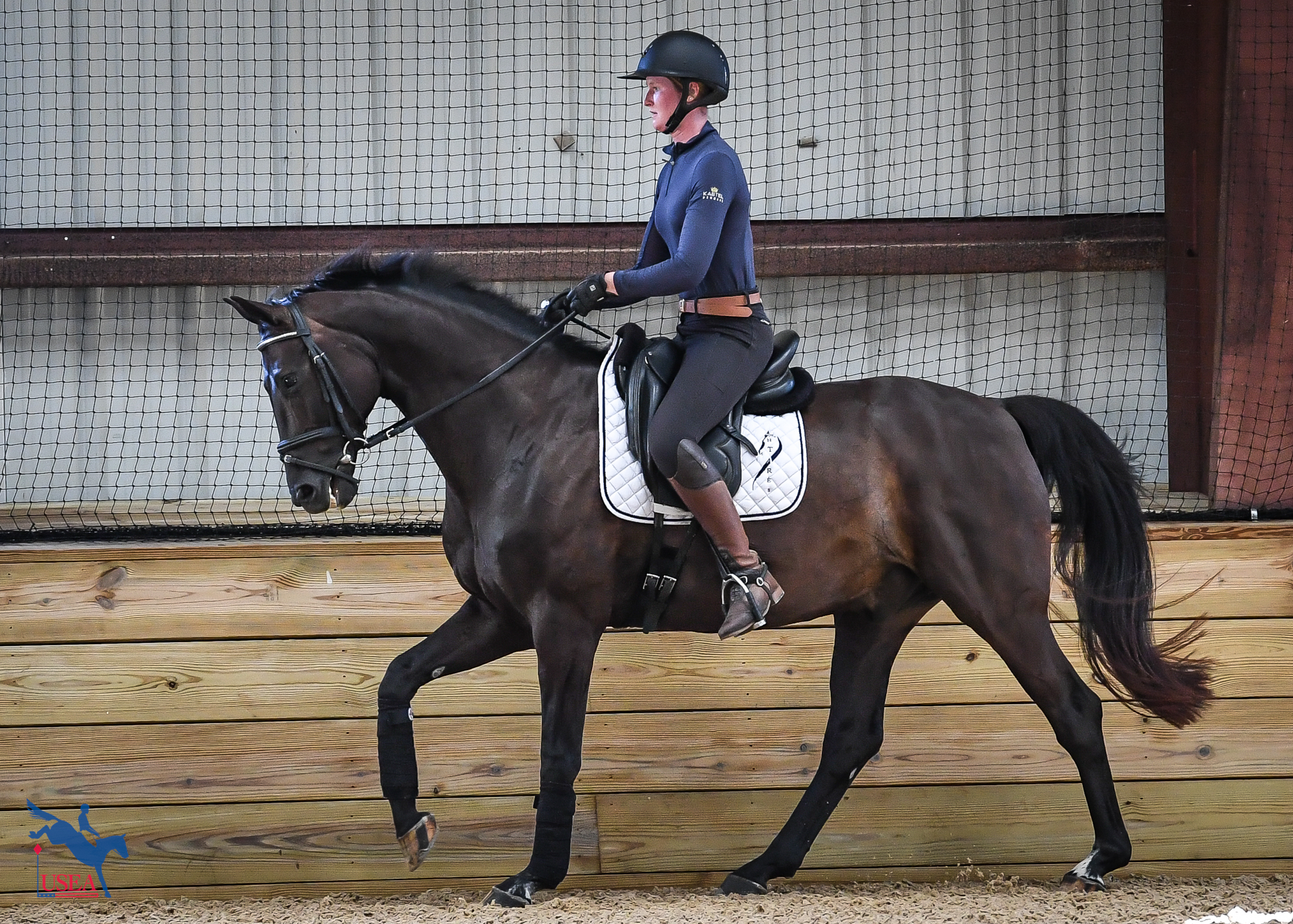
Before they swapped horses, Lilley asked the riders what steps they would take when getting on a new horse for the first time. Most answered that they would check the horse’s response to their aids.
“[The riders] all had the same answer and the right answer—making sure [the horse] accepts the aids and what they do and don’t do,” said Lilley. “Then they can come up with a game plan from there to be able to try to make things better. If there’s a direction or a gait that’s harder for them or where they fall off the [training] scale a little bit, then they can use that information to make the horses better. They all have a really good concept of what the scale is and how to build one upon the next, and that’s where I’m pretty lucky.”
While some riders worked their borrowed mounts through a bit more than others, each horse came out of their sessions improved.
“I was pleasantly surprised when they switch-rode,” said Lilley. “It’s really telling that when you ride a different horse—we all have tendencies, so sometimes the tendencies work for a new horse and sometimes they don’t. All of the horses got good and some of them got better. I think a lot of it is that you don’t have the history with the horse.”
The clinic concludes tomorrow with show jumping starting at 7 a.m. to beat the heat.
The Participants:
East I | Morven Park Equestrian Center | Leesburg, Virginia
- Emma Armstrong
- Sylvia Byars
- Emeline Gilbert
- Madison Haney
- Lizzie Hoff
- Samantha Homeyer
- Caitlin O'Roark
- Audrey Ogan
- Eliza Quigley
- Adelyn Rinehart
- Camila Saenz
- Annabelle Sprague
Don't forget to follow the USEA’s coverage on social media!
Facebook | Instagram | Twitter
About the USEA Emerging Athlete U21 Program (EA21)
The purpose of the USEA Emerging Athletes U21 Program (EA21) is to identify and provide consistent quality instruction to the next generation of elite event riders. The aim is to create a pipeline for potential team riders by identifying and developing young talent, improving horsemanship and riding skills, and training and improving skills and consistency.
The USEA Emerging Athletes U21 Program was launched in 2022 with a model of five summertime regional clinics taught by selected USEA Eventing Coaches Program (ECP) instructors, leading to a winter national camp consisting of selected Young Riders from the regional clinics. Athletes who are 21 years or younger, are current members of their USEA Young Rider Area program, and are established at the Training Level or higher, are eligible to apply for the EA21 program. Click here to learn more about the USEA EA21 Program.
The USEA would like to thank ARMA, Kerrits, PulseVet, Ride iQ, Sidelines Magazine, Schneiders Saddlery and #WeRideTogether for sponsoring the USEA Emerging Athletes U21 Program.
























